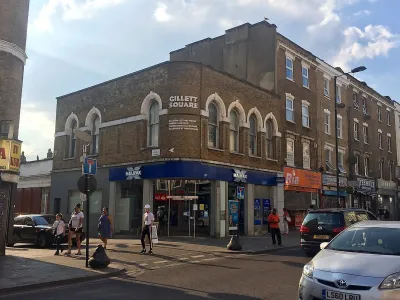A new book asks, what if cities were designed around health equity?

“What if buildings and neighborhoods were planned with health and climate risks in mind, just like businesses use financial data to guide their decisions?” Liz York poses this question in an op-ed for Next Cities, leaning on the findings in Adele Houghton and Carlos Castillo-Salgado’s new book, Architectural Epidemiology.
Just as a doctor might diagnose a patient based on symptoms and environmental exposures, Houghton and Castillo-Salgado’s framework helps designers, developers and policymakers diagnose the health of a place.
The process uses place-based data about health and climate to inform customized development strategies. In the South Bronx, one of New York City’s most environmentally burdened neighborhoods, an affordable housing development “took an indoor-focused strategy” to improve air quality for residents. “With no regulatory leverage to reduce nearby traffic or emissions, the project team instead designed a protective shell: a high-performance building envelope, mechanical exhaust and ventilation systems, low-VOC materials and a no-smoking policy. These features directly addressed local respiratory and cardiovascular risk data, providing a sanctuary of clean air in a polluted context.”
Other, larger projects have the opportunity to be part of a broader health equity initiative. In East London’s Hackney borough, a project called Gillett Square that dates back to the 1980s transformed a former parking lot and surrounding area into a square surrounded by workspaces and retail prioritized for local businesses and cultural groups. “Importantly, these design moves responded to both immediate and long-term public health concerns identified in the Architectural Epidemiology framework: exposure to air pollution, heat vulnerability, mental health stressors and pedestrian safety risks.”
FULL STORY: What If We Designed Cities Like a Doctor?

Maui's Vacation Rental Debate Turns Ugly
Verbal attacks, misinformation campaigns and fistfights plague a high-stakes debate to convert thousands of vacation rentals into long-term housing.

Planetizen Federal Action Tracker
A weekly monitor of how Trump’s orders and actions are impacting planners and planning in America.

In Urban Planning, AI Prompting Could be the New Design Thinking
Creativity has long been key to great urban design. What if we see AI as our new creative partner?

King County Supportive Housing Program Offers Hope for Unhoused Residents
The county is taking a ‘Housing First’ approach that prioritizes getting people into housing, then offering wraparound supportive services.

Researchers Use AI to Get Clearer Picture of US Housing
Analysts are using artificial intelligence to supercharge their research by allowing them to comb through data faster. Though these AI tools can be error prone, they save time and housing researchers are optimistic about the future.

Making Shared Micromobility More Inclusive
Cities and shared mobility system operators can do more to include people with disabilities in planning and operations, per a new report.
Urban Design for Planners 1: Software Tools
This six-course series explores essential urban design concepts using open source software and equips planners with the tools they need to participate fully in the urban design process.
Planning for Universal Design
Learn the tools for implementing Universal Design in planning regulations.
planning NEXT
Appalachian Highlands Housing Partners
Mpact (founded as Rail~Volution)
City of Camden Redevelopment Agency
City of Astoria
City of Portland
City of Laramie





























